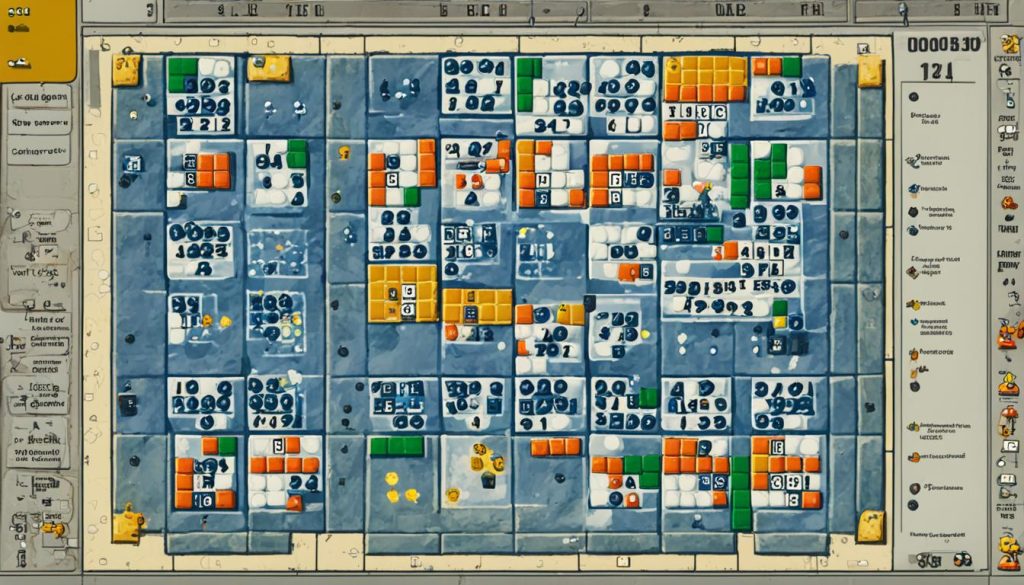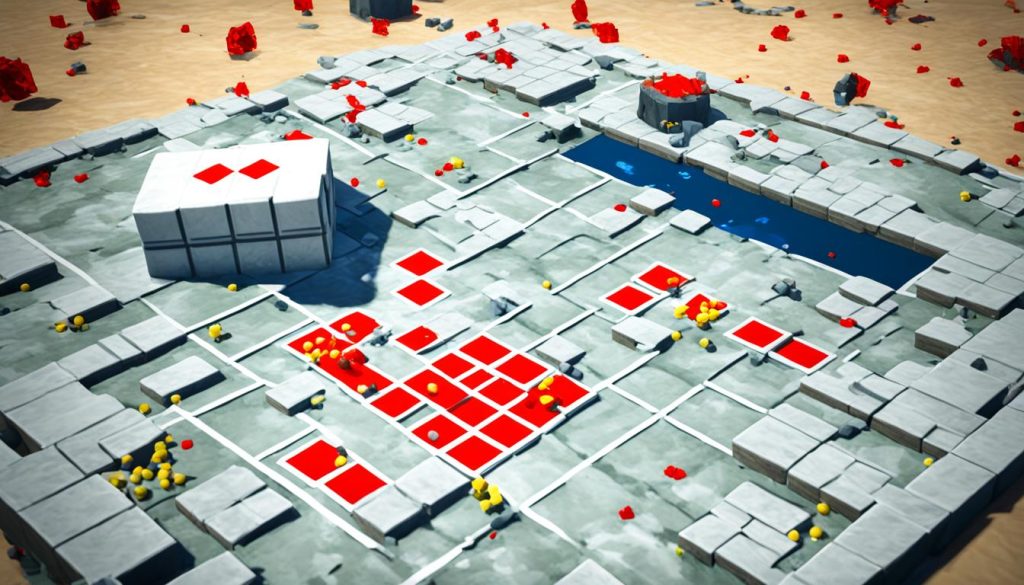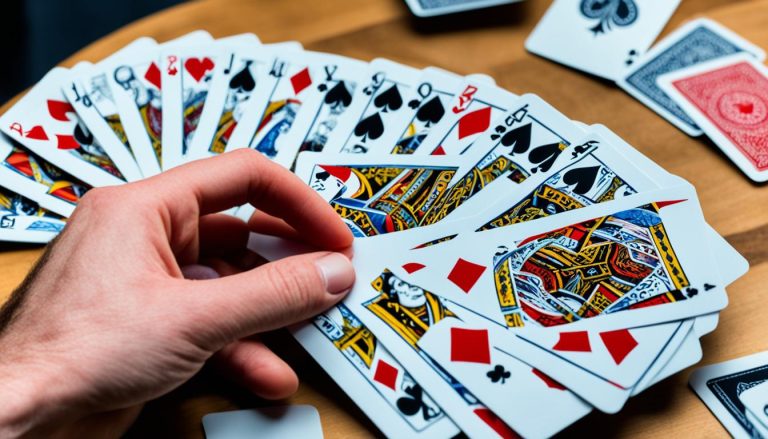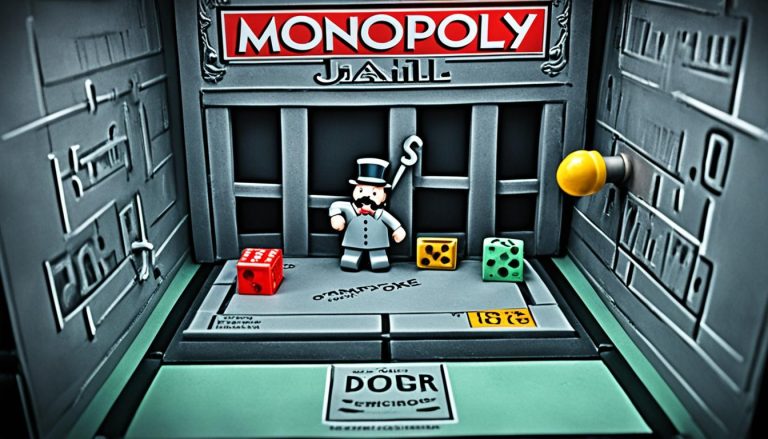Welcome to our beginner’s guide to Minesweeper! If you’ve always wanted to master this classic puzzle game, you’ve come to the right place. In this tutorial, we’ll walk you through the rules, gameplay, and strategies of Minesweeper.
Minesweeper is a captivating game that challenges your logic and deduction skills. The objective is simple: open all the safe squares without clicking on any of the hidden mines. Each square contains a number clue, indicating the number of mines adjacent to it. Analyzing these clues is crucial to your success in the game.
Before we dive into the gameplay, let’s quickly go over the rules. To play Minesweeper, left-click on a square to open it. If you think a square contains a mine, right-click to flag it. But remember, flagging mines is just as important as uncovering safe squares. Be cautious and avoid clicking on any mines, as that will end the game.
In the next section, we’ll explore various gameplay strategies and techniques to improve your Minesweeper skills. Whether you’re a beginner or an experienced player, these insights will come in handy. So let’s get started on this exciting journey of mine-dodging and logic-solving!
Minesweeper Gameplay and Strategies
In Minesweeper, the grid consists of safe squares, numbered squares indicating the mines nearby, and mines. The numbers on the squares indicate the number of mines adjacent to that square. You can use these numbers to eliminate possible mine locations and uncover safe squares.
By analyzing the patterns and relationships between the numbers, you can develop strategies to solve the puzzles more efficiently. Some common strategies include:
- Starting with squares that have the fewest possible mine neighbors
- Using chording to quickly open squares
- Using logical deductions based on the numbers
- Flagging squares that are highly likely to contain mines
Here are some additional tips and tricks to improve your Minesweeper gameplay:
- Take your time and think through each move
- Don’t rush, as one wrong click can end the game
- Practice regularly to improve your skills
- Keep track of the numbers and use them to your advantage
- Stay calm and don’t get discouraged if you make a mistake
How to Play Minesweeper Beginner’s Guide?
If you’re new to Minesweeper, it’s helpful to start with the beginner difficulty level. This level has a smaller grid and fewer mines, making it easier to understand the game mechanics. Begin by randomly clicking on squares until you uncover a safe opening with many numbered squares. This will give you more information to work with. Always pay attention to the numbers and use the patterns and logic to determine the locations of the mines. Start with simpler patterns and gradually challenge yourself with more complex ones. Practice and patience are key to becoming proficient in Minesweeper.
To get started, here are some rules to keep in mind:
- Click to Open: Left-click on a square to open it. If there’s a mine, the game ends. But if it’s safe, a number will appear, indicating the number of mines adjacent to that square.
- Flag Mines: Right-click on a square to flag it as a mine. This helps keep track of potential mine locations and prevents accidental clicks.
- Use Numbers Wisely: The numbers on the squares are your clues. They reveal how many mines are nearby. Use this information to deduce the positions of the mines.
To give you a visual representation, here’s a table showing the basic Minesweeper game rules:
| Square Status | Meaning |
|---|---|
| Blank | A safe square with no mines nearby. |
| Numbered | Indicates the number of mines adjacent to that square. |
| Mine | Clicking on a mine ends the game. |
Keep these tips and rules in mind as you embark on your Minesweeper journey. With practice and a strategic mindset, you’ll soon become a Minesweeper pro. Happy sweeping!
An image displaying a Minesweeper game grid with various squares, some numbered and others blank. This visual representation helps to understand the game rules and dynamics.

Advanced Minesweeper Techniques
Once you’ve mastered the basic gameplay of Minesweeper, you can take your skills to the next level by implementing advanced techniques. These strategies will help you improve your mastery of the game and increase your success rate.
Recognizing Advanced Patterns
An important aspect of mastering Minesweeper is being able to identify advanced patterns. One such pattern is the 1-2 pattern, where a “1” and “2” are adjacent to each other along a wall. This indicates that there is one mine adjacent to the “1” and two mines adjacent to the “2”. By recognizing this pattern, you can deduce the locations of these mines and make more informed decisions.
Another pattern to watch out for is the wall pattern, where two numbers are next to each other with one safe square in between. This suggests that there is a mine on one side of the wall, but not on the other. By understanding and utilizing these patterns, you can more effectively uncover safe squares and avoid mines.
Efficient Board Navigation
Efficiently navigating the Minesweeper board is another crucial skill to develop. Start by focusing on squares that have the fewest possible mine neighbors. These squares give you the most information to work with and help you make progress faster.
Chording is also a technique that can help you navigate the board efficiently. By left-clicking on a square with the correct number of flags around it, you can quickly open multiple squares at once. This strategy saves time and allows you to progress through the game more swiftly.
Optimizing Flagging Techniques
Flagging squares accurately is an essential part of Minesweeper. To optimize your flagging techniques, pay close attention to the numbers on the squares. If a number matches the number of remaining flags you have, it indicates that all the remaining unopened squares around that number are mines. Flagging these squares will keep you safe and help you avoid unnecessary clicks.
Additionally, use the right-click and left-click combination known as “chord and stretch” to flag squares quickly and efficiently. Start by right-clicking on a numbered square and then left-clicking on the corresponding number. This action will automatically open all the remaining unopened squares around that number, saving you time and effort.
By mastering these advanced Minesweeper techniques, you’ll be able to tackle even the most challenging puzzles with confidence and skill. Practice, observe patterns, and refine your strategies to become a true expert in the game.

| Advanced Minesweeper Techniques | Benefits |
|---|---|
| Recognizing Advanced Patterns | Helps identify mine locations and make better-informed decisions |
| Efficient Board Navigation | Enables faster progress through the game and optimizes strategy |
| Optimizing Flagging Techniques | Improves accuracy in flagging mines and avoids unnecessary clicks |
Tips and Tricks for Winning at Minesweeper
To improve your chances of winning at Minesweeper, here are some helpful tips and tricks:
- Start with smaller grids and lower difficulty levels to build your skills gradually.
- Focus on opening squares rather than flagging mines, as clearing the board is the primary goal.
- Look for patterns and analyze the relationships between numbers to make deductions.
- Use chording to uncover multiple squares at once when you have the correct number of flags.
- Pay attention to the clock and try to improve your completion time with each game.
- Practice regularly to improve your speed and accuracy in recognizing patterns and making decisions.

| Tip | Description |
|---|---|
| Start with smaller grids and lower difficulty levels | By gradually increasing the complexity, you can develop the necessary skills and strategies to tackle larger grids with more mines. |
| Focus on opening squares | Instead of flagging mines randomly, prioritize opening safe squares to uncover more information about the placements of mines. |
| Look for patterns | Pay attention to the numbers on the squares and identify patterns in their placement to deduce the locations of mines more effectively. |
| Use chording | When you have correctly flagged all the mines surrounding a numbered square, you can use chording to quickly open the remaining adjacent squares. |
| Pay attention to the clock | Challenge yourself to improve your completion time with each game, which encourages faster decision-making and sharper analytical skills. |
| Practice regularly | Consistent practice will help you become more familiar with common patterns and improve your overall speed and accuracy in solving Minesweeper puzzles. |
Conclusion
Minesweeper is a captivating puzzle game that challenges your logical thinking and strategic decision-making abilities. Through a thorough understanding of the game rules, learning effective gameplay strategies, and consistent practice, you can enhance your skills and excel in solving Minesweeper puzzles. Whether you’re a beginner or an advanced player, Minesweeper offers limitless opportunities for honing your abilities and experiencing the thrill of puzzle-solving.
By immersing yourself in the world of Minesweeper, you can embark on a journey of intellectual stimulation and enjoyment. Take your first steps towards conquering the mines by embracing the challenges this game presents. With every puzzle you solve, you’ll gain a deeper understanding of the game’s mechanics and develop strategies that will lead you to victory.
So, let the adventure begin! Start playing Minesweeper, have fun, and savor the satisfaction that comes with unraveling each puzzle. Unleash your logical prowess, outsmart the mines, and revel in the exhilaration of conquering this timeless game. Remember, practice makes perfect, and with each game you play, you’re one step closer to mastery.
FAQ
What is the Goal of a Minesweeper?
The objective of Minesweeper is to open all the safe squares without clicking on a mine.
How Can I Increase My Chances of Winning at Minesweeper?
To increase your chances of winning at Minesweeper, you can start with smaller grids and lower difficulty levels, focus on opening squares rather than flagging mines, look for patterns and analyze the relationships between numbers, use chording to uncover multiple squares at once, and practice regularly to improve your speed and accuracy.
What Do the Numbers Mean in Minesweeper?
The numbers in Minesweeper represent the number of mines that are touching each square. For example, if a square has a 1 on it, it means that there is one mine next to that square. If a square has a 2 on it, it means that there are two mines surrounding that square. Use these numbers strategically to help you uncover the safe squares and avoid the hidden mines.
How to Play Minesweeper on Keyboard?
To play Minesweeper on a keyboard, you will need to use the arrow keys to navigate the board and the space bar to uncover a tile. Use the number keys to place flags or question marks on tiles that you suspect have mines underneath. Remember to use logic and deductive reasoning when playing, as each number on a tile represents how many mines are adjacent to it. And don’t forget to flag any potential mines before you uncover them, as one wrong move can lead to an explosion and game over!
How to Play Minesweeper on Phone?
Playing Minesweeper on your phone is easy with our Gaming app. Simply download the app from the App Store or Google Play, and open it to start playing. To play Minesweeper, tap on a square to reveal what’s underneath – it could be a number indicating how many mines are adjacent, a blank space, or even a mine! Use logic and strategy to mark the squares where you think there might be hidden mines by long-pressing on them. Be careful though, if you accidentally tap on a mine, the game is over.






